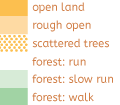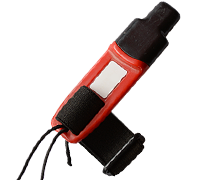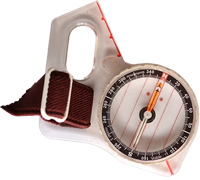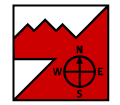2024 Wednesday Evening #1 – Bellevue College

The first event in the 2024 Wednesday Evening Series will be held at Bellevue College – a brand new map! The Wednesday Evening Series is our most relaxed, casual set of navigation events, held in local parks once the weather (hopefully) warms up. These events are a little more low-key than those in the Winter League, and we typically offer a barbeque afterward for all participants.
Events in the Wednesday Evening Series are generally less challenging (both physically and navigationally) than many of our other events, and are therefore great for beginners and those less experienced with orienteering – while also offering a challenge to longtime participants of the sport.
We will be offering day-of event registration in addition to preregistration. There will be no start time pre-signup.
COURSES
Course designer(s): Patrick Nuss
Here are the course distances:
Course 1 – 1.0 km, 10 controls
Course 2 – 2.0 km, 12 controls
Course 3 – 3.1 km, 17 controls
Course 4 (2+3) – 5.1 km, 29 controls
How are courses measured?
Courses are measured as the crow flies, in a direct line from control to control. Unless you have wings, you will travel farther than this distance! Courses are measured in kilometers, so a good rule of thumb is to simply round up to miles to estimate how far you will go. So in a 5 kilometer race, you’ll likely travel up to 5 miles.
Map & Course Notes
Woo! It’s a brand new map at a venue that’s never been used for orienteering!
And part of the map is VERY complicated.
At first glance, Bellevue College seems like many of the other community colleges that we have mapped, like North Seattle College, South Seattle College, Edmonds College, and Shoreline College. The area is generally pretty flat, buildings and sidewalks are generally aligned on a grid, there are huge parking lots, and there is some green space and sports fields around the edges.
All of this holds true at Bellevue College, except the heart of campus features a complex of six large buildings, interconnected with 2nd-level skybridges, balconies, breezeways, open-air interior corridors and staircases. In total, there’s over 1 kilometer of 2nd-level pathways here, with another 1 kilometer of pathways underneath. But don’t assume that the upper level is a duplicate of the lower level. Some passageways only go through on the upper level, some only go through on the lower level, and some go through both. And dead-end hallways oftentimes don’t have the same lengths on the upper level vs. lower level.
Thankfully, the latest mapping standard for “sprint” orienteering has 3 symbols to make mapping this complex area possible.
- White diagonal crosshatching. If you see this pattern, that means that there are two levels here. The colored part of the pattern shows what is on the upper level (usually a canopy, but it can also be under-the-sky concrete or a solid building). The white part of the pattern just shows that there’s another level underneath, which is almost always runnable concrete.
- A line of black “sharkteeth”. If you see this, it means two very different things: it’s passable if you’re on the lower level, and it’s not passable if you’re on the upper level. This is used extensively on the map because of all of the skybridges and balconies (you can run on them and under them). If you’re approaching a line of sharkteeth from the “pointy” side of the teeth, then you can go under. If you’re approaching a line of sharkteeth from the “top” side of the teeth, there’s a wall or railing preventing you from getting down.
- A line of black square dots. This shows you where building walls and passageways are on the lower level only, and you will only see this symbol in conjunction with the white diagonal crosshatching.
Want to learn more? Here’s a document from the International Orienteering Federation with more details about these multi-level symbols.
Thankfully, everything in this area of campus is just on two levels, which makes for an unambiguous map. Course #1 stays only on the lower level. Course #2 goes to the upper level only once (and climbs at a very straightforward location). Course #3 is where you’ll be challenged a few times!
Complex? Yes. Ambiguous? No. If you ever find that you’re on the wrong level, just find some stairs. There are 17 staircases that connect the upper and lower levels of this area!
Speaking of stairways, many of their shapes (and the immediate building geometries surrounding them) are simplified a little bit to aid in map legibility. Also on the subject of map legibility: there’s a lot of urban stuff on a campus, things like picnic tables, benches, light poles, garbage cans, fire hydrants, signposts, and power lines. If these were all mapped, it would be a bunch of clutter, so they’ve all been omitted. Very large utility boxes and air conditioners have been mapped as buildings (at their minimum size). Smoking shelters are mapped as buildings.
Also, again to aid in legibility in tight spaces, many “tags” have been removed from passable fences, railings, and retaining walls. If it’s a thick black line, it’s uncrossable, but if it’s a medium black line, it is ok to cross.
As always, stay out of the olive green. On this map, it’s predominantly used where the adjacent neighborhood is, but you can run on the the streets there. And for the sports fields.
There’s a 5-story parking garage here that’s also out-of-bounds.
Vegetation around campus this time of year makes you wonder if Bellevue College has any landscapers. Generally-speaking, most vegetation around campus is pretty passable. It’s just not pristinely manicured like you might expect on other campuses. There’s extensive use of basic “light green” and “rough open with scattered thickets”.
Maps #1 and #2 are at 1:3000 scale. Map #3 is at 1:4000.
SCHEDULE
5:00 pm – Registration and starts open.
7:00 pm – Registration and starts close.
8:00 pm – Course closure.
Why is there a start window?
This event uses an interval start, which means that participants are started in waves instead of all at once. When you arrive at the start, follow the start volunteer’s instructions.
PRICES
PRE-REGISTRATION PRICES
$22 base price
– subtract $5 for CascadeOC members
– subtract $5 for using your own e-punch
DAY-OF-EVENT REGISTRATION
$25 base price
– subtract $5 for CascadeOC members
– subtract $5 for using your own e-punch
Participating as a group? Just $5 for each additional adult (16+) group
member, no cost for additional minors.
What’s an e-punch?
An e-punch records your race. At each control, you’ll dip the e-punch into an electronic box, which will beep and flash as confirmation. After you finish, you’ll download the e-punch at the download tent and get a receipt that show which controls you visited and how long you took between each; these are your “splits.”
Part of the fun of orienteering is comparing your splits with people who completed the same course, and discussing the routes you took!
SIGN UP
Online pre-registration closes:
Day-of-event registration is available by cash or check, made payable to Cascade Orienteering Club
LOCATION
Parking will be located in Parking Lot #8, one of the large lots on the SE side of campus.
CARPOOL
Looking for a carpool? Join the club email group and share your request to find a ride.
THE MAP
No map preview available
SAFETY & ETIQUETTE
Return to the Finish
All participants MUST return to the finish and download their e-punch or turn in their punch card.
Even if you have not finished your course, you must still return to the the finish and confirm with event staff that you have returned safely.
Out of Bounds
Some areas may be marked out of bounds. It is imperative to respect these boundaries to maintain our relationships with land managers. Participants MUST NOT go out of bounds. Any participant caught going out of bounds will be disqualified.
Course Closure
All participants MUST return to the finish by course closure time. If a participant does not return by course closure, event volunteers will begin coordinating a search party.
If you need a long time on the course, start as early in the start window as possible, wear a watch, and be prepared to cut your course short to make it back by the course closure time.
Whistle
All participants MUST carry a whistle on the course. Complimentary whistles are available at the start tent (please only take one).
If you are injured on the course and need assistance, blow three long blasts to call for help.
If you hear a call for help, abandon your course to find the person in distress.
Voices
Part of the fun and fairness of orienteering is navigating your own course, so please be polite when you find a checkpoint and don’t holler that you’ve found it.









